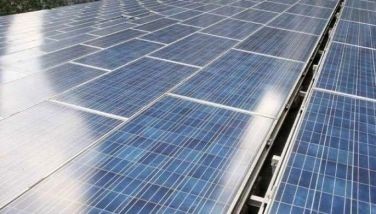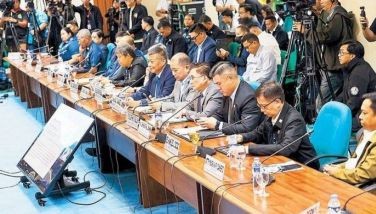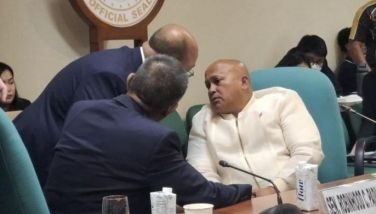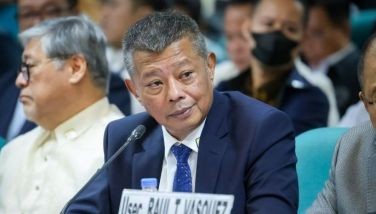Trade war

It was showtime last week for Donald Trump’s trade extravaganza. He called it Liberation Day against what he calls decades of unfair trade practices by America’s trade partners. Trump’s weapon of choice is the tariff, which he has called the most beautiful word in the dictionary.
This is how The New York Times morning email explains the newly imposed tariffs: “The administration claims they are based on other countries’ trade barriers against the United States. In reality, the levies are based on how much more another country exports to America than it imports from it… The difference between exports and imports doesn’t necessarily reflect trade barriers; Americans may simply want to buy more stuff from, say, Japan than the Japanese want to buy from the United States.”
Economists, conservative and liberal, have been saying that a trade war unleashed by Trump’s tariff regime will bring untold negative consequences to the world economy. Trump is determined to bring the American economy to the McKinley era of the early 1990s.
But this has low impact on the Philippines. That’s basically because we are not an export-oriented economy. Ours is around 70 percent driven by domestic consumption. And Trump imposed the second lowest tariff on us at 17 percent among ASEAN countries, with Singapore getting the baseline rate of 10 percent.
We aren’t a major trading partner of the US. Our share of US imports is a minuscule 0.4 percent of total imports. But the US is the Philippines’ top destination for our exports, accounting for 16.6 percent of our total exports. The US is extremely important for our small export sector.
America’s total merchandise trade with the Philippines amounted to about $23.5 billion in 2024. The Philippines exported $14.2 billion worth of goods to the US, while it imported $9.3 billion, or a trade gain for the Philippines of $4.9 billion.
Our electronics manufacturing sector is about 60 percent of total Philippine merchandise exports, mostly to the US. But this sector should take the opportunity to quickly gear up and contest the US markets of our ASEAN neighbors that are saddled with higher tariffs: Vietnam at 46 percent; Malaysia at 24 percent; Thailand at 36 percent; Cambodia at 49 percent; Indonesia at 32 percent and Myanmar at 45 percent.
Even our moribund garments industry should be able to use existing excess capacity to quickly take a big bite of Cambodia’s primary exports to the United States of garments, footwear and travel goods. Our 17 percent tariff is a big advantage over Cambodia’s 49 percent.
Hopefully, Trump doesn’t launch a part two of his tariff war to bring offshored BPO work back to America.
According to Google AI, “there are discussions, particularly in the context of recent US trade policies, about using tariffs to encourage the return of BPO (business process outsourcing) work to America, though the effectiveness of this approach is debated.”
Our export service revenue from our BPOs last year was about $40 billion and employs about two million full-time workers. That’s mostly coming from the US. Our hourly rates ranging from $8 to $14, compared to the $22 to $35 per hour in the US, will be difficult to match unless Trump imposes a tariff-like tax to equalize costs.
But the big story for us in the merchandise export category is in the latest report from the Office of the United States Trade Representative (USTR) which raised important issues with the Philippines which it says, work against the ability of US companies to export more products to us.
Actually, many of the points raised by the USTR are valid good governance issues that we have long wanted our government to address. If it will take a Trump trade war for our officials to wake up and implement long overdue reforms, this kind of pressure from the US government is more than welcome.
For instance, USTR’s 2025 National Trade Estimate (NTE) Report on Foreign Trade Barriers, published on March 31, specifically flagged corruption in Customs as a trade barrier the US seeks to dismantle.
The latest NTE report, submitted to President Trump and the US Congress, also called out issues in the Philippines’ judicial and regulatory processes. It expressed concerns about the supposed “lack of transparency” when it comes to court and regulatory decisions. The slow prosecution of cases was also flagged, particularly with issues related to intellectual property protection.
The USTR noted that the country still lags in its enforcement activities.
“Stakeholders report issues with online piracy and sales of counterfeit goods, including apparel, shoes, watches, jewelry, perfume and electronics,” it said. It cited the continued inclusion of Greenhills Shopping Center on the Notorious Markets List.
The USTR also complained that US agricultural exports were “significantly inhibited” by high tariffs – ranging from 30 percent to 50 percent – under the Philippines’ minimum access volume system, which covers products such as sugar, corn, coffee/coffee extracts, potatoes, pork and poultry.
Citing the order signed by President Marcos on June 20, 2024, the USTR said that EO 62 raises uncertainty about “whether the rice tariff rate will be extended or modified.”
The DA was also tagged for not having acted on an April 2024 BBM order to review and revise quantitative restrictions on fish imports, while one of its attached agencies, the Sugar Regulatory Administration, was also flagged for not having issued standard guidelines on sugar importation.
We can and we should exploit our lower tariff advantage over Vietnam, Malaysia and Thailand, to win more FDI. But we have a lot to fix with our investment climate to be competitive enough to attract FDI fleeing the higher Trumpian tariffs on our neighbors. The USTR report cited some needed reforms.
Hopefully, we don’t let this good opportunity pass us by again.
Boo Chanco’s email address is bchanco@gmail.com. Follow him on X @boochanco
- Latest
- Trending































